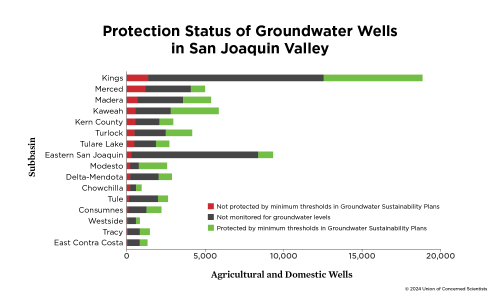Early spring throws natural and man-made systems "out of kilter."
When was the last time you showed up at the wrong time for an event? A large dinner party, say—something you were looking forward to all week and involved getting a babysitter or dressing up or bringing a fine bottle of wine (or all of those things).
But you arrive two hours late. The hosts said 6 p.m.; you heard 8 p.m. Much of the food is gone. Your date is perturbed. Other guests are onto their second and third drinks. And all are involved in conversations you can't follow. The evening goes awry because your timing was off.
Spring arrives much earlier than expected
Now think of a natural occurrence: the arrival of spring, say—something that happens every year and involves a complex assortment of natural and man-made systems including rain and snow, wildlife and migrations, and water dams and rivers.
But spring arrives much earlier than it used to. An analysis of temperature data shows that spring weather arrives nearly 10 days earlier on average in the Northern Hemisphere than it did in the 1950s.
Other lines of evidence confirm this “spring creep,” including the date of the last spring freeze and the timing of when plants and trees first leaf out and bloom, both of which are occurring earlier than in past decades.
When spring comes sooner, snow melts earlier. Reservoirs behind dams fill too early and water needs to be released for flood control. Vegetation dries out earlier.
Temperatures increase and soils dry out so that, by late summer, the stage is set for forest fires to grow even larger. Reservoirs don't refill with water. And so on.
The events that surround spring move out of harmony.
Floods and drought: the domino effects of early spring
While the dinner party scenario is made up, earlier springs are real. Rising temperatures on Earth are changing the climate, including the timing of spring, which is having myriad domino effects on people and the environment.
One example of spring's effect on human-engineered systems is dams, which have been designed to handle snow melt levels experienced during the twentieth century.
California, for example, has a large number of relatively small dams that store snow melt as a water resource (for needs such as crop irrigation in the Central Valley during summer). Yet the early release of water due to spring's new overabundance can mean water shortages later.
"Natural and engineered systems are thrown out of kilter. This is a big issue. No one wants more dams. Where would you site them? If you do more ground water storage, you do more pumping and have water quality issues. And so a lot of the impacts of climate change are these timing issues," says Anthony Westerling, Ph.D., assistant professor of environmental engineering and geography at the University of California–Merced.
"You build the infrastructure to take advantage of timing, but now systems are no longer optimized for the new reality. You have to invest in new systems and more energy-intensive systems for drinking water, for agriculture. This results in more irrigation and more pumping, more energy use, and more investment in infrastructure."
Rising temperatures and early snow melt contribute to forest fires, carbon "feedback"
Another domino effect of an early spring is an increase in large forest fires. According to research published by Westerling and colleagues, rising temperatures combined with early snowmelt are contributing to large forest fires in areas that have infrequently experienced natural fires, and in high elevation Rocky Mountain forests where fire has been largely unaffected by other human activities.
Westerling also notes that forests in these relatively wet areas of the American West rely on water from snow melt. As these areas dry out sooner due to early springs, they have been extremely sensitive to modest increases in temperature.
These large forests are experiencing larger and more frequent fires. "When fires become a more repeat occurrence, how does this affect ecosystems? It is a lot harder for species to adapt by migration when humans have fragmented the landscape with development, and at the same time we have accelerated the rate of climate change," he adds.
Other by-products of forest fires include a climate amplification effect referred to as "feedback," which is caused by burning trees releasing carbon directly into the atmosphere and burned areas retaining less carbon in their soils.
Even though carbon dioxide is absorbed by small plants and tree saplings growing after the fire, these only gradually offset the immense loss from burned trees that had stored carbon for decades or centuries in some cases. Forest fires also affect air pollution, iconic landscapes, and storm runoff and sediment in runoff.
Global warming is occurring rapidly, challenging natural systems
"Anthropogenic [human-caused] climate change is occurring at a much faster rate than species have evolved to handle," Westerling says, "so it's a very complex combination of human effects that are putting a lot of stress on the species. It will be interesting to see which ones flourish and which ones don't."
It's all in the timing.



